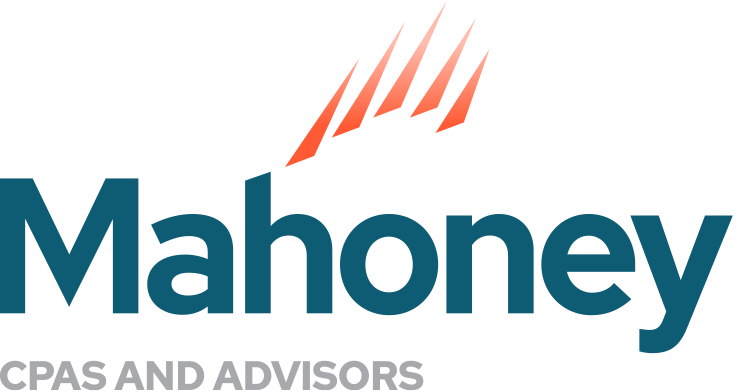
QuickBooks Training: When are your books closed?
Many bookkeepers (or business owners wearing the bookkeeping hat) have the goal of simply entering each line of their bank statement into the financial accounting software (the “books”). The goal is met once you have entered ‘something’ into your file for each line on your statement or maybe even from each line in your handwritten checkbook. Then you can say “done!” for the month.
Then at month or year-end you hope that the profit and loss statement your books generate from that data is “good” because “it is all in there.” Right? Wrong!
There are several more steps that need to be taken before you can feel confident in that profit and loss statement and before you can confidently say that your books are closed.
Using your software’s bank reconciliation tool:
The first, most basic step toward closing your books is reconciling your bank and credit card statements. Most financial accounting software solutions, QuickBooks being the most common solution, have a bank reconciliation tool that allows you to check off each transaction that was entered in your books as you simultaneously check off each transaction on your bank statement. You then enter the ending balance from your bank’s statement into the reconciliation tool and when your books match that balance you are reconciled. QuickBooks can automate most of this process using bank feeds, however a trained accountant can avoid some common pitfalls that occur with any automated system. Reconciliation is a simple but necessary step to maintain accurate books.
This step may seem unnecessary to you if you use your system’s bank feed tool or believe that you are diligent enough that nothing has been missed in your process of recording transactions all month. Even the most diligent of bookkeepers miss a transaction from time to time, or double enter items. Even the best automations glitch. Perhaps more importantly, even with fully reconciled bank statements you will still have uncleared items. The items left unchecked at month end alert you to vendors that have not cashed checks, items that were reissued and should be deleted, or simply items entered incorrectly. Dealing with these items throughout the year closer to the time that they were entered is much easier than dealing with them months later.
Give your balance sheet some love:
 So many business owners live and die the profit and loss statement, for good reason! Comparing the income you brought in against the expenses that went out tells you what your bottom line is. If you are running in the red your doors most likely won’t stay open for long, and it is one of the most important indicators to keep track of. However, the problem with only looking at the profit and loss is:
So many business owners live and die the profit and loss statement, for good reason! Comparing the income you brought in against the expenses that went out tells you what your bottom line is. If you are running in the red your doors most likely won’t stay open for long, and it is one of the most important indicators to keep track of. However, the problem with only looking at the profit and loss is:
- If your balance sheet is not correct, the profit and loss won’t be either. The balance sheet has many verifiable balances that you can check against outside statements (bank records, actual inventory counts, balances shown on other entity’s books if you own several companies that loan each other money). Correcting the balance sheet most likely will change the bottom line on your profit and loss statement.
- The balance sheet reflects the overall health of your business, not just the bottom line for the period you are managing in the short term. It is important to look at trends over time to look out for red flags. For instance, are your accounts receivable or inventory balances growing steadily? You may need to improve collections or deal with some stale product.
Develop your book closing strategy for your unique business needs:
Each account on your balance sheet should be at least considered each month. Whether you fully adjust each balance sheet account every month or only once a year will be a cost-benefit analysis for your unique business and what reporting requirements you have. At a minimum you should be looking at the change from period to period for each balance sheet account, making sure you understand what the account is made up of, and employing the help of a finance professional for any accounts you don’t have a good grasp of.
For your books to be closed each month you should develop a checklist for each of the sections of your balance sheet.
For example:
- Cash and credit card balances are easily verifiable using bank reconciliations, but you should take these a step further and review any uncleared transactions and look at overall balances over time. Developing a cash projection using ending balances and budgeted activity for the next one-to-six-month period is a good idea.
- Loan and investment balances are easily verifiable against bank records, and periodically reviewing interest rates and finance opportunities are advised.
- Fixed assets and depreciation can be adjusted monthly, quarterly, or annually. Reviewing your expenses each month to look for large purchases that should be spread out over many months or years is a great way to avoid surprises at year-end and more accurately reflect your bottom line. It is also a good idea to regularly review the list of assets you are depreciating for any that have been sold or retired.
- Payroll and benefits can be reconciled against your payroll provider’s reports to make sure you haven’t missed an important deadline that could result in a penalty. You can also catch if something is being recorded to a balance sheet account in error, which would result in a big swing to your bottom line when corrected.
- Prepaid expenses and deferred revenue accounts must be maintained each month and reconciled against a schedule detailing what is being amortized. For instance, if you pay $12,000 for an entire year of insurance at $1,000 per month and your accountant codes that to a balance sheet account so that it doesn’t all hit in one month (making your bottom line look artificially small), someone must remember to move $1,000 each month from the balance sheet to the income statement. At the end of February your balance sheet account should be $10,000 (meaning January and February were properly moved to the profit and loss). Again, it is up to each business if and how often they will adjust these types of balance sheet accounts, but all businesses need to know what it means when an amount appears on the balance sheet in these categories.
- Equity accounts are often overlooked as often the only activity here is each year when last’s year’s bottom line either increases or decreases your equity balance. You should be verifying throughout the year that items aren’t being miscoded here and that any money that owners put in or take out of the business (aside from owner loans) are reflected here.
Once you and your accountant develop your closing strategy and execute it each month you can enjoy the peace of mind that your books are in good order. Your next step will be to take those beautiful, closed books and, with the help of a seasoned accountant familiar with your industry, create a dashboard with key performance indicators that allow you to assess your business performance in real time.
Let us know if you would like a sample checklist to determine if you’re books are officially closed. We are always happy to help!
Additional reading: Year-End Adjusting Entries
ADDRESS
10 River Park Plaza, Suite 800
Saint Paul, MN 55107
(651) 227.6695
Fax: (651) 227.9796
info@mahoneycpa.com
© 2024 Mahoney | Privacy Policy
Mahoney Ulbrich Christiansen & Russ, PA



